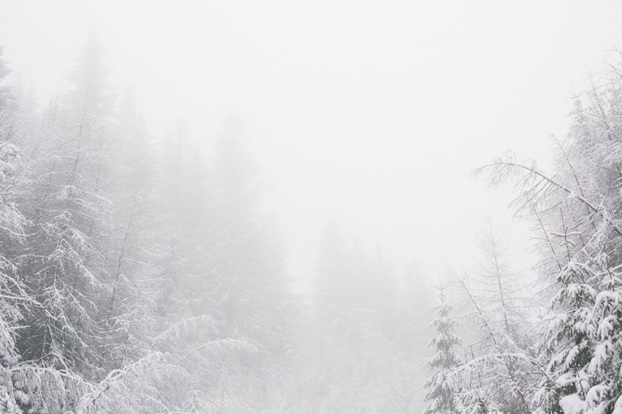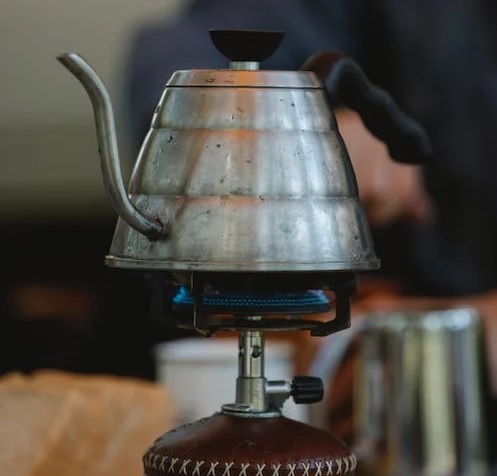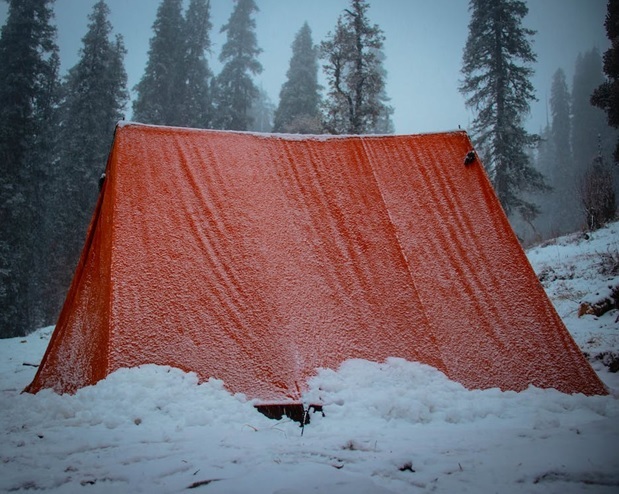
24 Feb Staying Warm in the Backcountry: Beyond the Tactical Winter Jacket
In the winter here where we are, it can get cold, with temperatures dipping down into the negatives, easily.
When it gets that cold, you need to be smart about staying warm, especially on an extended backcountry trip that you expect to be several days.
But, of course, you also need to be prepared, regardless. So, here’s some of our best advice for staying warm when it gets really cold.
Under the Tactical Winter Jacket: Layer Up, Wisely
The UF Pro Delta ML Gen 2 Tactical Winter Jackets we sell here are perfect for staying warm in the cold. They’re completely windproof, water-repellent, and made with top class thermal insulation, with 37.5 Microfleece and G-Loft insulation that keeps you warm even when the temperature starts to dip below zero.
But you want to be comfortable – not just protected from freezing to death – and that takes smart layering.
Treat this tactical winter jacket like a shell. You still need to layer wisely underneath it with a base layer and a mid layer.
The base layer is the one you wear next to your skin. This should be made of wool or a performance synthetic. Avoid cotton; wool stays warm when wet, cotton takes forever to dry and will freeze you quickly if it gets wet.
Next to the base layer, you’ll want a thick, well-insulated mid-layer to keep you warm. This is where the bulk of your insulation should come from. Wool and performance synthetics are also good here. You can wear a down jacket, just be aware that down, though light, loses most of its insulating properties when it gets wet.
With a good base and midlayer, if you throw one of these tactical winter jackets over the top, you should be good at temperatures well below freezing as long as you stay active and well-fueled.
Keep Moving (but Stay Dry)
Obviously, sitting in a stand will make you get cold fast, but if you’re stalking or still hunting, keep things moving. Even a light pace is better than sitting still for too long as it will keep your blood circulating
Even though it is critical to keep moving in extremely cold temperatures (it’s very hard for anyone to stay warm while sitting still if it’s below 0℉) make sure to pay attention to your heart rate and internal temperature. What you can’t afford is to start sweating so that your base layer gets wet.
We all have different tolerances for cold – make sure not to overexert yourself because you don’t want to have to jockey around with shedding layers when it’s really cold out.
Stay Hydrated and Eat Snacks
Just as important as motion is fuel – that is, keeping hydrated and eating a bit here and there throughout the day.
Believe it or not, you’re actually just as likely to become dehydrated in the cold as you are in the heat, and in some cases more so. This is because cold air is often unforgivingly dry, and with each breath, you lose precious water, even if you’re sitting quite still.
You may not feel thirsty, but you need at least 8 cups per day (if not more). Water helps regulate your body temperature, and on top of that, keeps your blood pressure normal and helps keep you in a healthy and alert state of mind.
Eating food in extreme cold is also paramount to keeping warm, as your caloric needs will increase substantially in the cold. It is cellular metabolism itself that enables us to keep a homeostatic body temperature, and you need food for that.
On top of that, a good warm meal will keep your morale up and help keep your mind clear and alert – just like staying hydrated.
Dry snacks, which keep well in the field, are fine – but a nice warm meal is a much better supplement to cold temperatures. Our Peak Refuel meals are great for this – consider starting and ending each day with a hot meal to help keep you warm.
Use Hand Warmers and Toe Warmers As a Supplement
Some of us are better at dealing with cold temperatures than others – that’s just a fact of life. If you need a little assistance, keep chemical or electronic hand and toe warmers in your pack and use them as you need them.
Which, itself, is another note. Make sure you wear good, heavy thermal wool socks, and a liner sock underneath (silk is good). Also be sure to be particular about your boots. The insulation rating must be more than adequate for the conditions you expect.
The same goes for your gloves, and it’s best to wear a liner underneath in extremely cold temperatures.
Nighttime Tips and Tricks
For those of you embarking on a multi-day foray into the backcountry at the most inhospitable times of the year, make sure you are ready when the nighttime rolls around.
- Vent the tent: Keeping the tent well-vented will prevent excess moisture forming inside, which will condense on the tent walls, and on you, and can make your otherwise dry sleeping bag and clothes wet. This is an extremely dangerous situation that must be avoided in the cold.
- Keep your boots on: You know your limits, but when it’s below zero, it’s a good idea to wear your boots to bed, unless they are ludicrously dirty. Look, we don’t want to bring dirt and sand in the sleeping bag, but if it’s that or frostbite, take your pick.
- Bring some heat in the sleeping bag: Heat up a bottle of water and bring it into the sleeping bag with you – or, keep a disposable plastic bottle on hand and use that to relieve yourself before going to bed. It’s not the most pleasant thought, but it won’t waste the heat. Actually, that’s another pointer – do not leave the tent in the middle of the night to go to the bathroom – you’ll lose a lot of heat that it will be hard to recover. Make sure there’s an empty vessel you can use for that inside the tent with you.
- Never sleep on the ground: Never, under any circumstances, sleep on the cold ground. The earth has a prodigious, cosmic appetite to suck heat out of your body. You will not win that matchup. Always, always sleep on an appropriate inflatable or closed-cell foam sleeping pad. On that note…
- Know how to read R-value: Sleeping pads are given an R-value, which indicates how suitable they are for use in the cold, according to their insulative abilities. The higher the R-value, the better the insulative efficiency, so, if it’s going to be extremely cold, go with a higher R-value. An R-value of 5.5 or more is better in extremely cold temperatures.
Gear Up at Anarchy Outdoors
There you have it, from your base layer to your tactical winter jacket and some other tips sprinkled in. put these tips into action next winter to make sure you stay warm while you’re afield.




No Comments